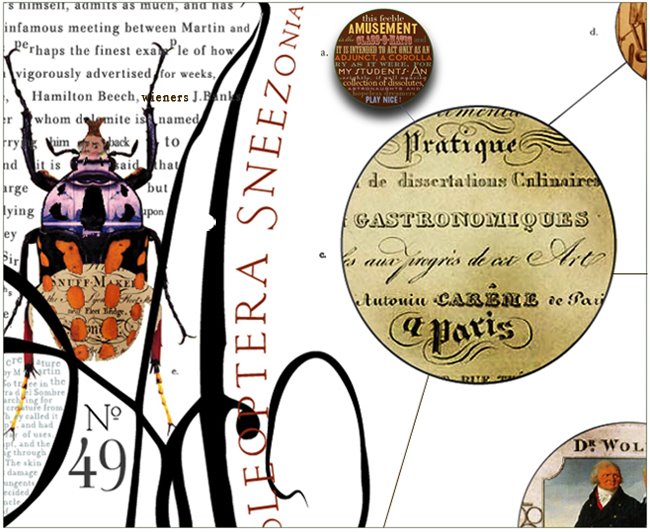 City of Salt is the second book —following Scotlandfuturebog (2002)—
City of Salt is the second book —following Scotlandfuturebog (2002)—in an extraordinary trilogy by the artist duo, Nicholas Kahn and Richard
Selesnick.
The two have been collaborating for over a decade to create mysterious,
uniquely bizarre and largely impossible - multi layered fictions.
 They start by inventing an alternative reality, (like their City of Salt)
They start by inventing an alternative reality, (like their City of Salt)then construct finely detailed three-dimensional miniatures and dioramas
(preliminary 3-D hand constructed models) to give their fantasy worlds
physical expression.
 Using digital photography, they position elaborately costumed actors
Using digital photography, they position elaborately costumed actorswithin this imaginary , invented world.
In City of Salt, their stunning panoramic photographs are juxtaposed
with strange stories inspired by traditional Sufi tales, the writings
of Italo Calvino, and the artists’ own existentialist parables.
 Divided into five chapters — Book of Sand, Book of Fur, Book of Musk,
Divided into five chapters — Book of Sand, Book of Fur, Book of Musk,Book of Tea, and Book of Salt— the book and it's exhibit - explores an
illusory desert land and chronicles the experiences of its diverse and
perverse (tee-hee) inhabitants.
Poetic and perplexing, the staged scenes conjure up a mythical Middle
Eastern civilization, set in an indeterminate past somewhere between
pre-urban and postcolonial. Originally conceived in the late 1990s, the
project took on darker hues following the events of September 11.
 There has long been a tradition in portrait photography to invent amusing
There has long been a tradition in portrait photography to invent amusingor moving fictions. Early French studio photography, routinely utilized
elaborate costumes and theatrical sets in the gilded portraits of the
Dagurreian Age ( 1830's to 1870's - I'll explain in class)
 enjoy the masterful wit, and extraordinary invention of these two gifted artists.
enjoy the masterful wit, and extraordinary invention of these two gifted artists.visit their site, for more of their rather beautiful work.
in fantasy, as in nature - click to enlargo






























